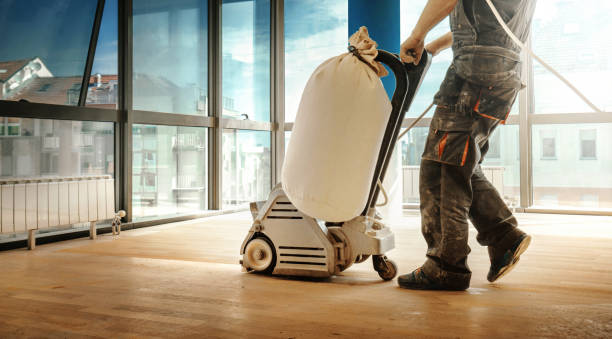How to Incorporate Industrial Furniture into Your Decor
Industrial style has surged in popularity within home decor, captivating those who appreciate a robust, utilitarian, and yet stylish interior. Characterized by raw surfaces, a melding of metal and wood, and an overall factory-esque vibe, industrial furniture can transform your living space into a contemporary, cool sanctuary. Here’s how you can seamlessly integrate this bold aesthetic into your home without overwhelming the existing decor:
Understanding Industrial Style
Before diving into incorporating industrial furniture, it's essential to grasp what industrial style entails:
- Materials: Steel, reclaimed wood, raw metal finishes, concrete, and exposed brick are staples.
- Colors: A palette dominated by blacks, grays, and earth tones, occasionally punctuated with vibrant colors for contrast.
- Design Elements: Minimalistic, functional, with an emphasis on exposed structural details like pipe ducts or structural pipes used in decor.
Steps to Incorporate Industrial Furniture
1. Start Small with Accessories
If you're new to the industrial look, begin with accessories:
- Use metal trays or vintage gear clocks for coffee tables.
- Opt for industrial-style lighting – think Edison bulb pendants or lamp bases with mechanical components.
- Metal or wire baskets can serve as storage for magazines or as small plant holders.
2. Introduce Furniture Pieces
After fitting in some accessories, move to larger furniture items:
- Couches and Chairs: Look for leather or dark fabric with a metal structure. Consider furniture with nailhead trim or a metal frame.
- Tables: Iron and wood coffee tables or desks with a raw metal base are quintessential industrial. Use glass for an ultra-modern touch, or reclaimed wood for warmth.
- Shelving: Open metal shelving units not only provide storage but also echo the exposed edifices of industrial spaces.
3. Choose the Right Color Scheme
Industrial doesn't mean dark and dreary. Combat stereotypical notions by:
- Adding natural colors via artwork or textiles to break up the starkness.
- Implementing pops of color like teal, mustard, or red to counterbalance the industrial grays and blacks.
4. Play with Textures
Industrial decor can sometimes feel harsh; soften it with:
- Rustic area rugs or plush throw cushions.
- Wooden elements to add warmth and contrast to metal features.
- Glass and mirror surfaces to reflect light and add a sleek touch.
5. Lighting is Key
Pendant lights, track lighting, or exposed filament bulbs enhance the factory feel while providing functional lighting:
- Hang lighting creatively, like over kitchen islands or as a statement in living areas.
- Add floor lamps with tripod stands or desk lamps with an industrial twist, like a blowtorch-inspired design.
6. Exposed Elements and Rustic Finishes
Embrace the natural:
- Leave some pipes exposed if feasible.
- Choose furniture with distressed finishes or rust-like markings.
- Wood should appear aged, weathered, or reclaimed.
7. Integrate Personal Touches
Keep the space from feeling sterile by:
- Incorporating personal items or art pieces to soften the industrial edge.
- Creating a gallery wall with metal-framed photos, industrial art, or industrial-themed prints.
8. Custom and DIY Projects
Leverage DIY for a unique touch:
- Designate a wall for a custom mural with metallic or chalkboard paint.
- Build your own storage with industrial pipes and lumber.
9. Consider Functionality
Industrial design is all about function meeting form:
- Choose furniture with storage solutions built-in to minimize clutter.
- Opt for multi-functional pieces like a coffee table with ottomans or a sofa bed.
SEO Considerations for Industrial Decor blogs
To optimize this content for search engines:
- Use keywords naturally like "industrial decor", "industrial style furniture", "home decor", etc.
- Include long-tail keywords such as "how to decorate with industrial furniture" or "mixing industrial with modern decor."
- Provide value with unique advice and vivid imagery to improve user engagement and sharing potential.
- Incorporate links to other relevant articles or resources on your site or external sources.
- Use schema markup to highlight reviews, blogs, or product listings if applicable.
Mixing Styles for Modern Comfort
The key to a successful industrial interior lies in the balance:
- Combine with softer, more modern elements to craft a welcoming environment.
- Achieve a harmonious mix by respecting the individuality of each piece while allowing them to complement each other through contrasts in textures and finishes.
By following these detailed steps, you can create a living space that celebrates the industrial aesthetic without sacrificing the comfort and personalized touch of your home. Industrial furniture is not just about the look; it's about embracing functionality, durability, and a unique blend of design elements that stand the test of time in both style and utility.
Conclusion
Incorporating industrial furniture into your existing decor involves more than just adding raw materials; it's about crafting an environment that feels lived-in, stylish, and functional. With a thoughtful approach to color, texture, and personal flair, you can turn any space into an industrial haven that echoes character and urban sophistication.


